Suffering & Despair on the Continental Divide Trail (Class of 2019)
As part of the Continental Divide Trail Survey, I ask hikers what their lowest moments on the trail were and when, if ever, they encountered a situation where they felt legitimately afraid or in danger.
The CDT has a reputation for being more challenging than the Pacific Crest Trail and the Appalachian Trail, but that is something hikers can quickly forget once they’re wrapped up in planning their next great adventure.
If you haven’t already heard, the unofficial motto of the CDT is “Embrace the brutality” (but you really shouldn’t say this unless you’re a tool). Some of the more well-known fears about the CDT, like the idea that the trail is unmarked and mostly cross-country, don’t hold up as much as they used to, but that doesn’t mean the trail is any less of an ass-kicker. Those thunderstorms care not whether or not you’re on a trail, they’ll blast you regardless.
WARNING! If you are worried about a loved one hiking the Continental Divide Trail or you have doubts about whether you want to undertake this journey yourself, you should probably stop reading now (or maybe you should definitely read this).
Weather-related Fear
- Camped in the middle of a really flat area, got caught in a thunderstorm in the middle of the night with lightning striking really close two times.
- Being on an exposed ridge when a lightning storm rolls in.
- On the first day of summer (June 21st), we got stuck in the snowstorm just outside of Steamboat Springs (Colorado). Three feet (1 m) of snow at 11,500 ft / 3,505 m. We had to bail out and lost our friend overnight – he thought we were dead, and we thought he was!
- I’ve never seen so much lightning in my life as I saw in southern Montana. It was a bit scary a few times. Particularly when I got caught In a storm on a ridge at 8,000 ft / 2,438 m just before Lincoln, Montana.
- We got caught in lightning storms at high/exposed elevations. We experienced insane wind and couldn’t get across a pass for four hours. We also got caught in an unexpected snowstorm in the last section of the San Juans (Colorado) with not enough warm gear or food.
- When I was high on a ridge in the middle of a thunderstorm with lightning all around me.
- One morning, temps were well below freezing and the wind was intense. My hands were frozen/no dexterity. I walked miles off the CDT (mistakenly followed a different trail) because I couldn’t use my hands to look at my phone/maps and I assumed the cairns present were for the CDT. I was scared because I was so cold and now off the CDT significantly.
- Encountered a lightning storm on the Gila High Route Alternate (New Mexico). I took shelter in a ditch while getting hailed on for about an hour. Lighting strikes were uncomfortably close-range.

Terrain-related Fear
- Lake Ann Pass (Colorado) – no trail visible, really steep, a lot of soft snow with patches of loose gravel and a large cornice on the north side.
- About 30-40 mi / 48-65 km into Colorado from Chama on July 2nd, when the snow was still crazy and the passes were steep and gnarly. The beauty of snow-covered slopes turned to deceiving deathtraps.
- I left my trail family behind because I didn’t want to do the Argentine Spine Alternate (Colorado), and the official CDT ended up being a complete mess. It quickly became corniced out which led me to try some sketchy rock climbing to get down. I legitimately thought that I was going to die. After about a ten-minute ordeal I climbed back out of there and decided to take a long way around via dirt road.
- Nearly triggering an avalanche out of Creede (Colorado) scared the shit out of me.
- Doing sketchy traverses and almost vertical ascents on snowshoes in Colorado, post-holing shoulder first and getting stuck in the snow.
- Southern San Juans. Gnarly passes in snowshoes without a personal locator beacon, no other hikers around, low mileage days, cold snow camping, and arduous snow travel.
- Going down Knapsack Col (Wyoming) and triggering several rockslides.

Human-related Fear
- Slept at a trailhead alone and two non-hikers pulled up talking about how much they hate hikers.
- I got woken up at 1:30 am while cowboy camping in the Great Basin (Wyoming) by off-roaders shining spotlights on me.
- People shooting guns at the side of a hill near the trail. Hearing this as I was cresting the hill.
- Hitched with a big rig truck driver, and learned way more about the drugs that are used while driving and logbook fabrication than I ever wanted to now!
- Random crazy non-thru-hikers at the hiker/biker sites in Glacier National Park (Montana).
- I was picked up by a drunk driver.

Animal-related Fear
- I got bluff charged by a momma black bear on the Gila River Alternate. One of the scariest experiences of my life.
- When grizzlies and moose were closer than 50 ft / 15 m.
- When I got to a water source after dark and there were cattle everywhere. The water tank was in a maze of corrals. I was too tired and hurt too bad to find a camp in the dark. I got water and decided to camp in one of the corrals after briefly checking to see that I was “locked-in”. At about midnight, I was startled awake by the thunder of hooves and bawling of cattle. About 30 cows came to the tank and were fighting and running through the corrals. I thought I was going to be trampled to death in my tent.
- Woke up in the middle of the night by a lot of coyotes howling very close from my tent as I was alone in Weminuche Wilderness. I did not know if I was to be attacked by them and I got prepared to fight back.
- A large grizzly bear approached us while eating lunch in Glacier National Park. It came up, stopped, came closer, stopped and came closer. It got within 100 ft / 30 m before moving away. I was with two other people that helped dissuade the bear. We were all yelling, clapping and making noise. It seemed to make the bear think before coming closer.
- At the end of the Gila River Wilderness Area, I was so tired and just wanted to set up camp. Then, 100 ft / 30 m ahead of me a mountain lion crosses the trail, seems to jump the river and scale the hill on the other side in seconds. I was then too scared to quit hiking until I was a couple of miles away at Snow Lake Campground.
- Being charged by a grizzly.

Town-related Fear
- Active shooter situation at Econolodge in Rawlins (Wyoming).
- Road walks. The narrow shoulder on the way to Grants (New Mexico); someone threw a bottle at us on our way to Rawlins (Wyoming).
- Cuba, New Mexico. There are some shady people hanging around all the time and hitting you up for money. People also tried to steal my friend’s clothes from the laundromat there.
- We decided to camp at a hot spring by Doc Campbell’s (New Mexico). It’s the one at the end of the dirt road…Wildwood? We had it all to ourselves. Then, at dusk, two weird, weird old guys drove right by our tent in an old sedan and asked us if anyone else was there. Me, a 25-year-old female who has listened to the right amount of murder podcasts, knew that this is how every unsolved murder starts. We packed up and went to camp with the rest of the hikers at Doc’s. It was very unsettling.
- Hitch into Lander (Wyoming) from a person who turned out to be unstable.
- Most road walks on paved highways felt extremely dangerous.
- In Grants, New Mexico – walking in was in constant concern of being attacked by the numerous unchained, unfenced dogs. Whilst in town was in constant concern of the local disdain.
Low Points on the Trail
As a part of the thru-hiker survey, I also ask hikers, “What (if anything) was your lowest moment on the trail?”
We all share and get to see photos of those glorious sunrises, sunsets, and mountain vistas, but the lesser shared (and possibly far more frequent) moments of misery and frustration also deserve a look.
Read the following knowing that any one of these things could (and very well may) happen to you, should you find yourself on the CDT.
Sick and injured on the CDT
- Defecating myself because of giardia.
- Throwing up over myself in the Steamboat Clinic parking lot.
- Pooping on an hourly basis for over 48 hours. Said poop being on a 30-second timer from the urge to go, to exiting my body. Leaving an open multiuse cat hole next to my tent. Waking up to find out I had pooped my shorts in my sleep. Bailing off the trail to go to the hospital and discover I had Campylobacter. Even more poop. I think I got it from eating pizza in the fridge of a guy who had not been home for over a week. Also, poop.
- An aspen tree fell on my head in Colorado – broken nose, three broken teeth, and a concussion. It fucking sucked.
- In Northern Colorado, after suffering through the snow I had giardia, a sinus infection, and was on my period and I felt weak and slow and couldn’t breathe at elevation. I kept tripping and post-holing and questioned if I enjoyed hiking anymore and for the first time in my thru-hiking career I wanted to quit
- Having undiagnosed mild giardia for half of Colorado, with a sinus infection, and record snow levels. I was not having fun.
- Vomiting after (accidentally) bear spraying a bar… and myself. Keep your safety on, kids!

Why New Mexico was terrible
- The bugs 14-24 mi / 22-39 km north of Crazy Cook. WTF are mosquitos doing in the desert at the end of September?
- Got really sick from bad cow trough water just before Silver City. I had to hitch in early to the medical center in Silver City for antibiotics.
- Frequently tripping/falling, especially in water, and losing the trail on the Gila River Alternate.
- The last month of the trail was so cold (October-November) We thought it would be warmer once we reached New Mexico but we were wrong. Being cold at night was the biggest challenge and mental strain.
- Exhaustion, pain, and sickness at Ghost Ranch.
- Walking on blisters for the first 1,000 mi / 1,600 km.
- After hiking for many miles with painful blisters, I tried to order new shoes to ship to Pie Town but discovered it would take six days, and my group wasn’t willing to wait that long. I was very discouraged and cried for 7 mi / 11 km.
- Rainy day into Grants. Coldest/wettest I’ve been in recent memory.
- First crossing in the Gila – it was my first river crossing with high water/fast-moving water.
- Long road walk north of Mount Taylor. I thought I was finally into the mountains and done with the road walks. Not the case!

Why Colorado was terrible
- My trail family and I were just a few miles out of Wolf Creek Pass when exhaustion, stress, and mental fatigue really hit us. We had one last sketchy climb we had to do to get to Wolf Creek Pass, and I just couldn’t do it anymore. I was just so done with worrying about every step I was taking. It was when I made a joke that we should all carry a pistol with one bullet in it in case we wanted to take the easy way out that I realized that we needed to get into town. When I first saw the road that leads into Pagosa Springs from the ridgeline I told my trail family that I was going to bail down to the road. At first, they were not going to join me, but after seeing that last hazardous climb they changed their minds. That was my lowest point on the trail. I was so done with dealing with snow at that point.
- Anytime in Colorado snow. The cold really seeps in your bones and feels like death.
- Around Pagosa, I was sort of getting sick of trees and I had had some spooky weather in the San Juans (not really that bad compared to lots, but still thunder snow’s whack), and since splitting from the Colorado Trail, I hadn’t seen any other thru-hikers (and while I almost always hiked alone, the loneliness was starting to get to me).
- In Steamboat Springs the altitude of Colorado was just starting to affect me (SOBO) so I had an awful headache and no appetite – was so exhausted. The town is so spread out and ritzy, I couldn’t afford a hotel room and everything was wildly expensive. Was dreading the road walk out of there.
- I shit my pants trying to get to the privy in Twin Lakes from my stealth camping spot.
- The San Juans were really challenging in terms of cold temps. The weather was dry but temps would dip into the low teens most nights. It’s tough to get up and get going day after day after day of that. By that time the physical part wasn’t so hard but mentally I was dragging.

Why Wyoming was terrible
- Having to hike 22 mi / 35 km out of the Winds with a stomach bug. Hadn’t eaten in 2 days and I was nearly shitting myself every 30 minutes. Listen to the health inspector grades, kids.
- Great Divide Basin – hadn’t seen other hikers in days, mentally checked out and bored/just grinding through miles.
- Day 18 of my section high through Wyoming. I didn’t eat enough, I slept on granite the night before, and it was about halfway through the winds when I was heading into the most difficult section. It wasn’t to the point where I wanted to quit. But I had zero motivation and would stop every hour for an hour.
- I ended up getting an allergic reaction to all the mosquito bites in Yellowstone National Park. I went into Grant Village to get help, but they were without compassion or care (I guess from dealing with too many tourists). Spent two miserable days in my tent in the campground trying to get better. I couldn’t get an updated itinerary because their computer was down. Fuck Yellowstone. Too many rules and people who don’t give a shit.
- After the snow in Colorado, I was extremely happy to be in the Basin and have dry feet. On the second day, we took a shortcut, and I ended up plunging into a wet meadow – with cows pissing and pooping in it. I was so OVER it that I cursed and yelled and nearly threw my poles.
- The wind in the Basin nearly did me in. At one point I was screaming at it to stop. It did not stop.
- The Basin. Hot and exposed. I cracked the third morning and cried for four hours straight.

Why Montana was terrible
- I got the 24-hour flu between Lima and Leadore and was sick and alone. The following two days with drained electrolytes, low appetite, and weakness were very tough. Everything was heavy on me, the loneliness, the physical strain – tired of the Montana-Idaho border steep ups and downs.
- I took the Butte Route in Montana and really missed people. At that point, I didn’t have a group I was hiking with. Loneliness was a factor, and I considered quitting at that point. I was really struggling with my “why” of being out there. There were three days of real mental struggle.
- Running low on food and being freezing wet and cold for four days in the Bob Marshall Wilderness.
- Loneliness especially through Bob Marshall Wilderness. Beautiful place but no one to share it with.
- Slipped in a river crossing in Montana when it had been raining all day. Hung out in a privy for three hours to warm up and dry off.
- Getting extracted from the Bob Marshall Wilderness by search and rescue due to 6 ft / 2 m of fresh snow, frostbite, and hypothermia.
- Getting destroyed by horse-flies in Southern Montana / Idaho while baking in the heat and running from thunderstorms

On quitting the trail
- I stopped with 300 mi / 483 km left. Physically exhausted.
- Two weeks into the recovery of my second injury realized that my thru-hike was over.
- The first kick in the balls was a knee injury at Mile 12 and having to call for a ride at the second water. After many doctor visits, MRI’s, etc., I was back on the trail. I was on and off the trail due to the knee with doctors telling me just to rest, which I did. Made it to the Pie Town Alternate and at 2 mi / 3.2 km in my knee gave out completely. I limped back to the highway and called someone in Reserve for a ride. I ended up going back home for six weeks and returned. At about 8 mi / 13 km in I had the same old knee pain again. I did make it to Pie Town but had to call it at that point.
- When we realized we didn’t have enough money to finish the trail. That sucked a lot.
- When I injured my knee and had to go off-trail for good.
Have your own horror story from a Continental Divide Trail thru-hike? Leave a comment below and warn future CDT classes of the awfulness that awaits them.
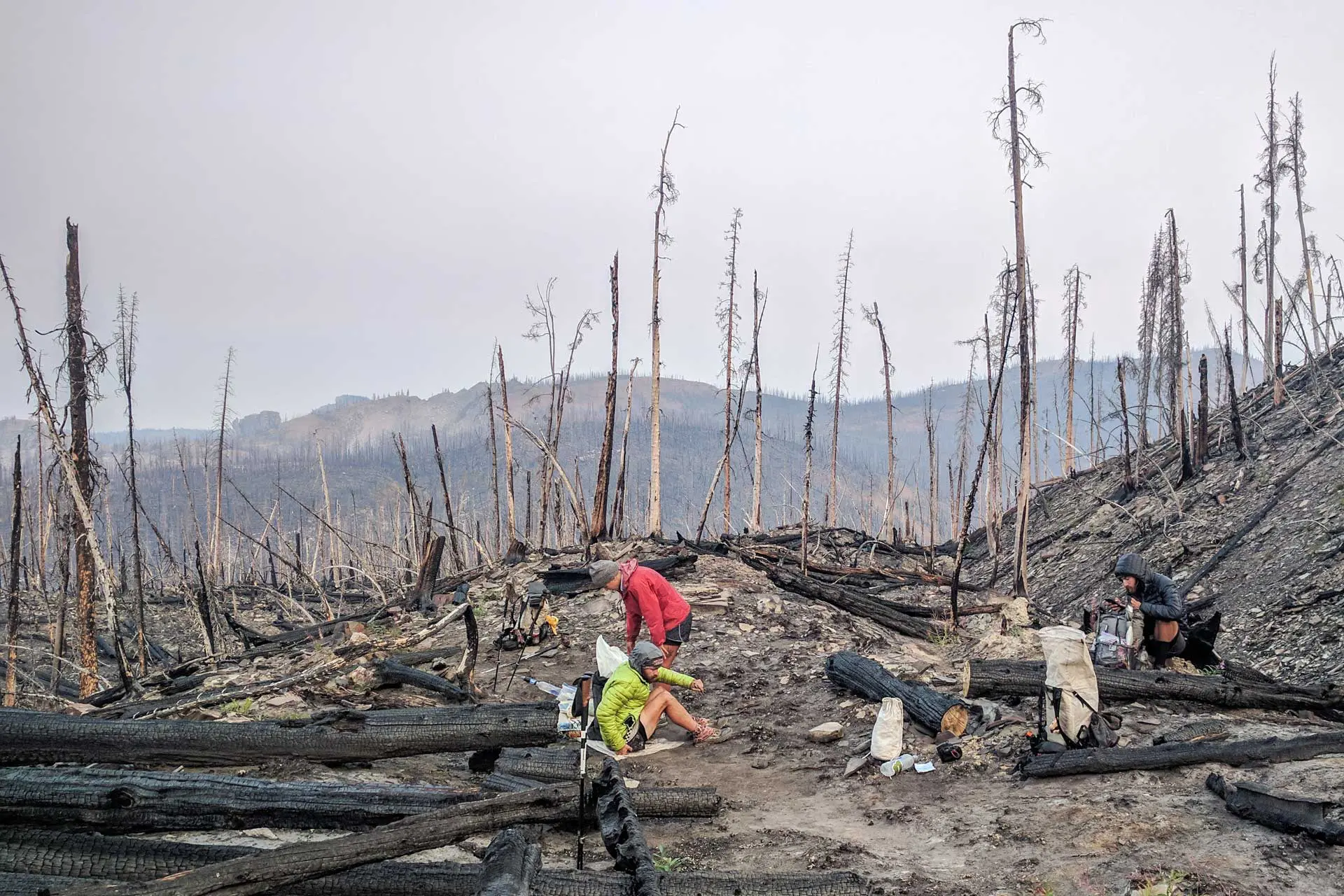
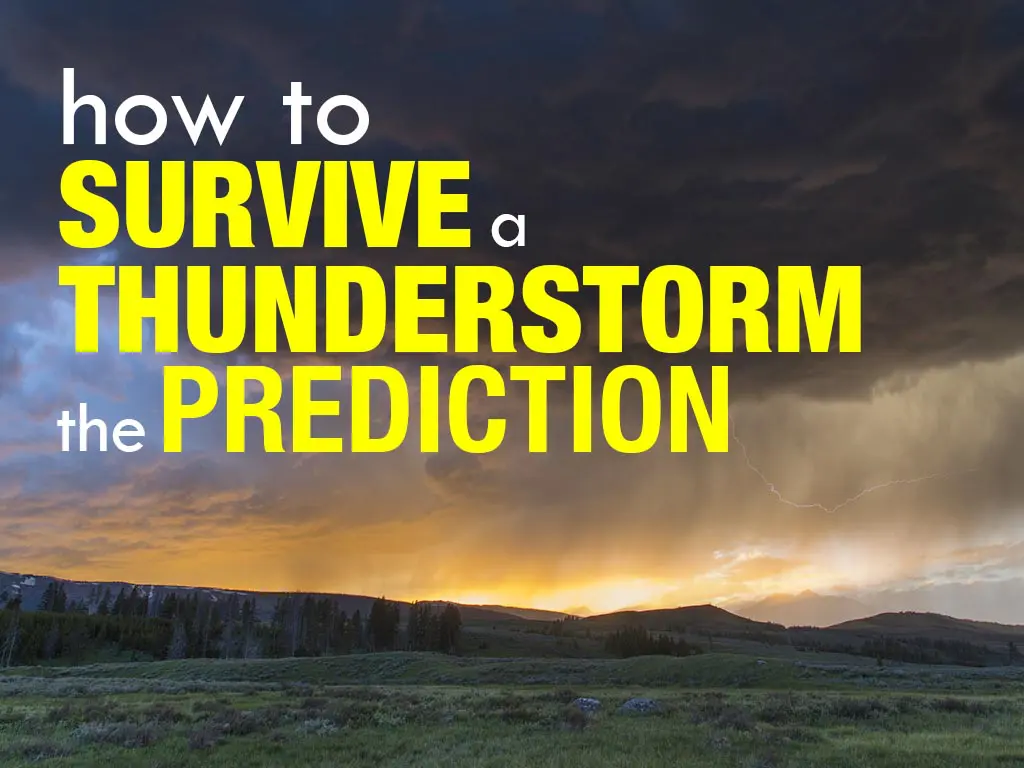
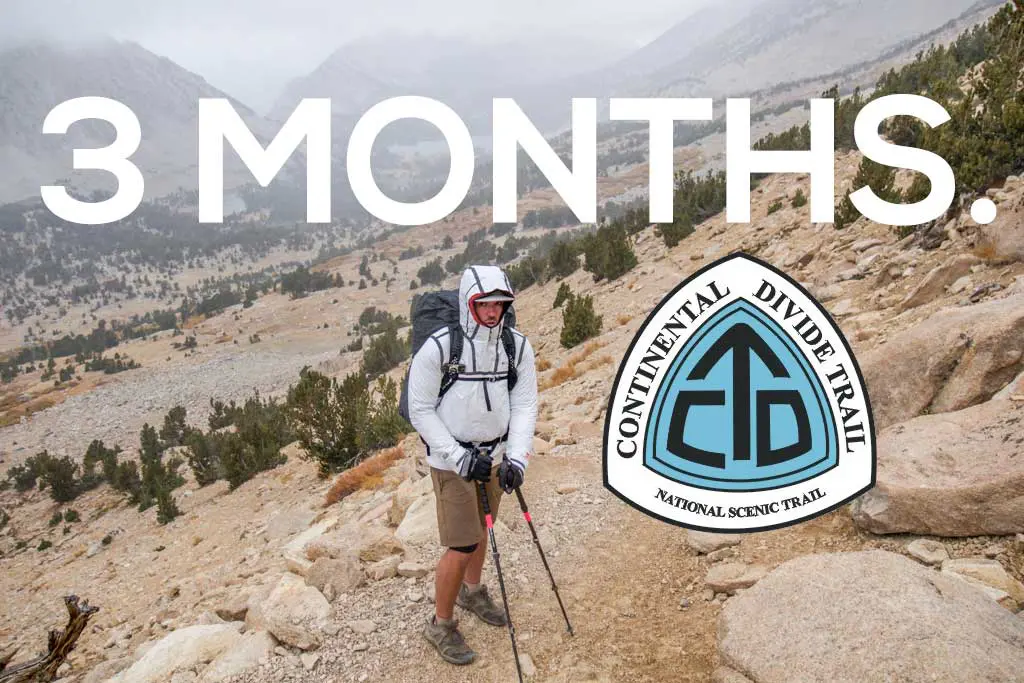
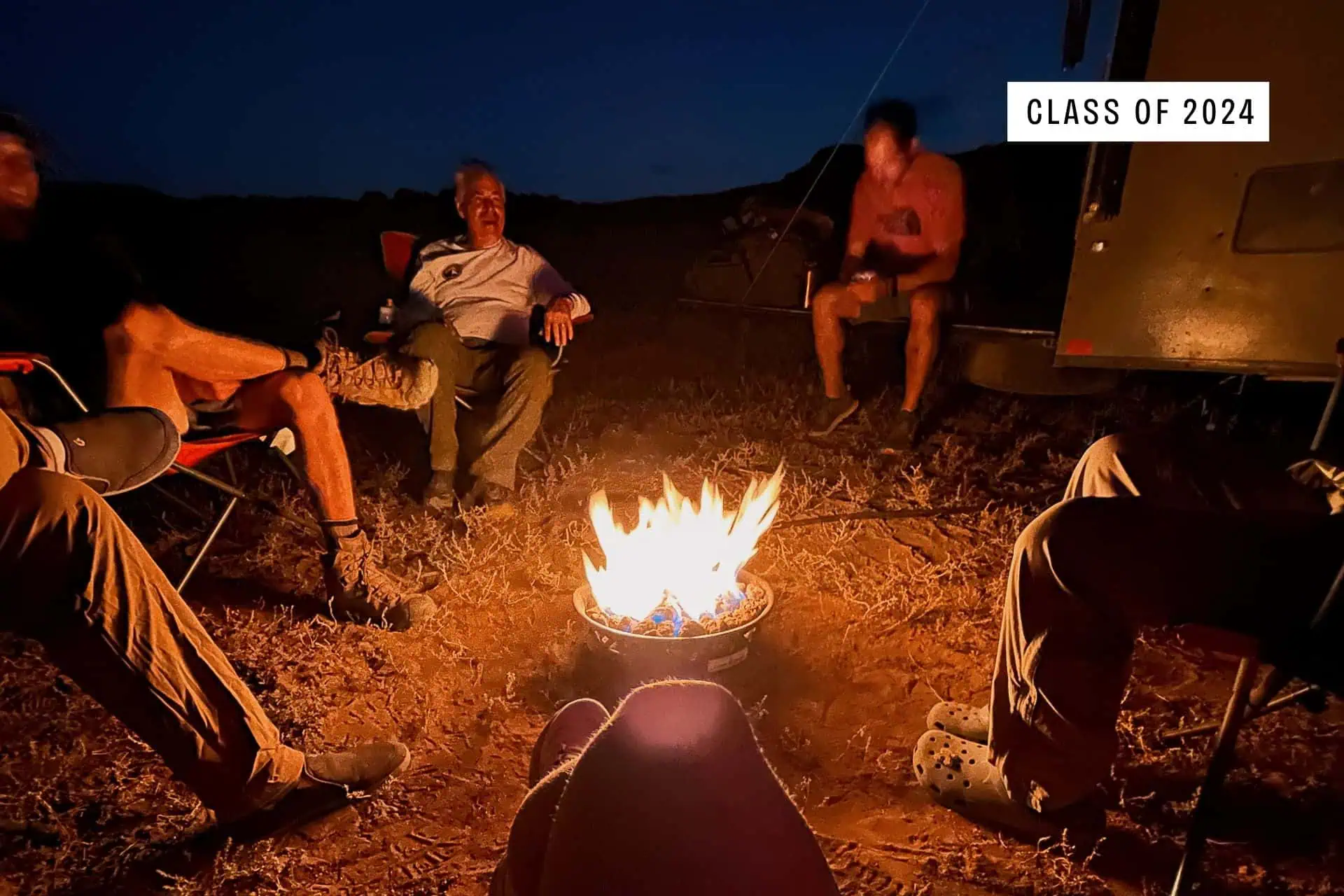
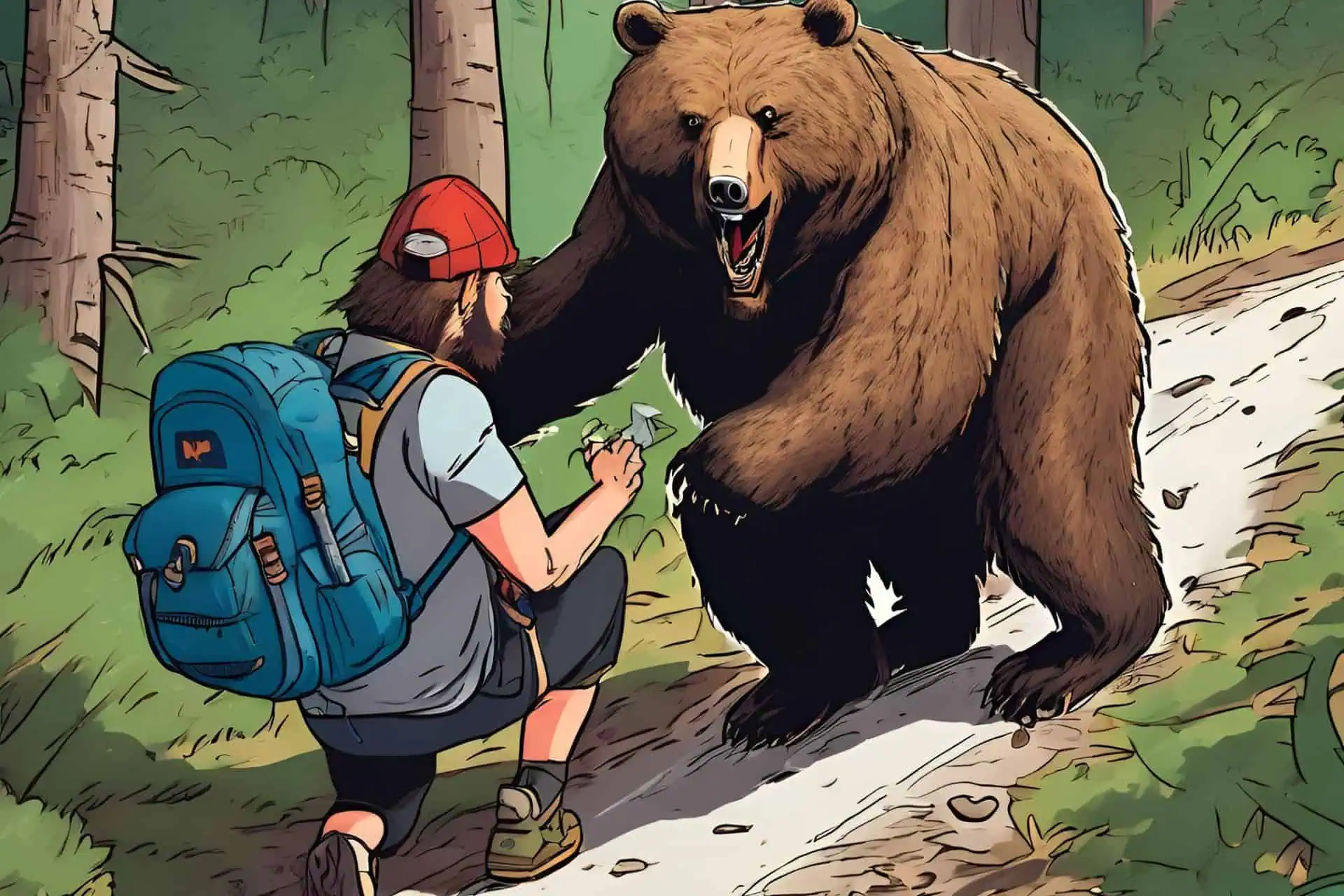
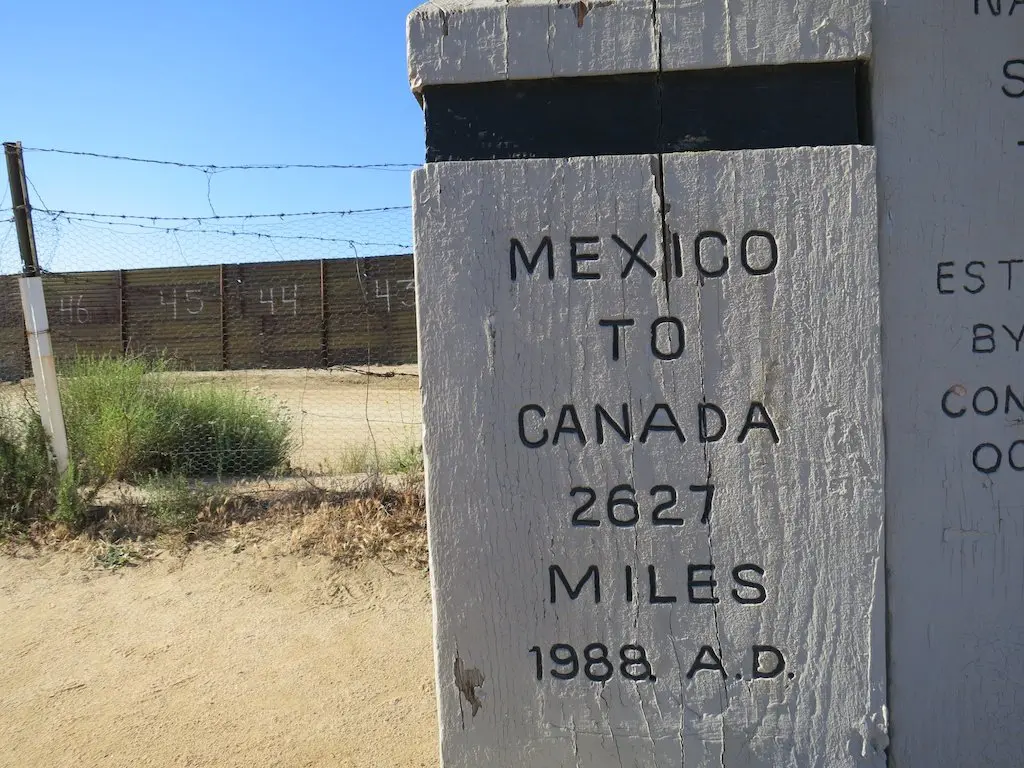
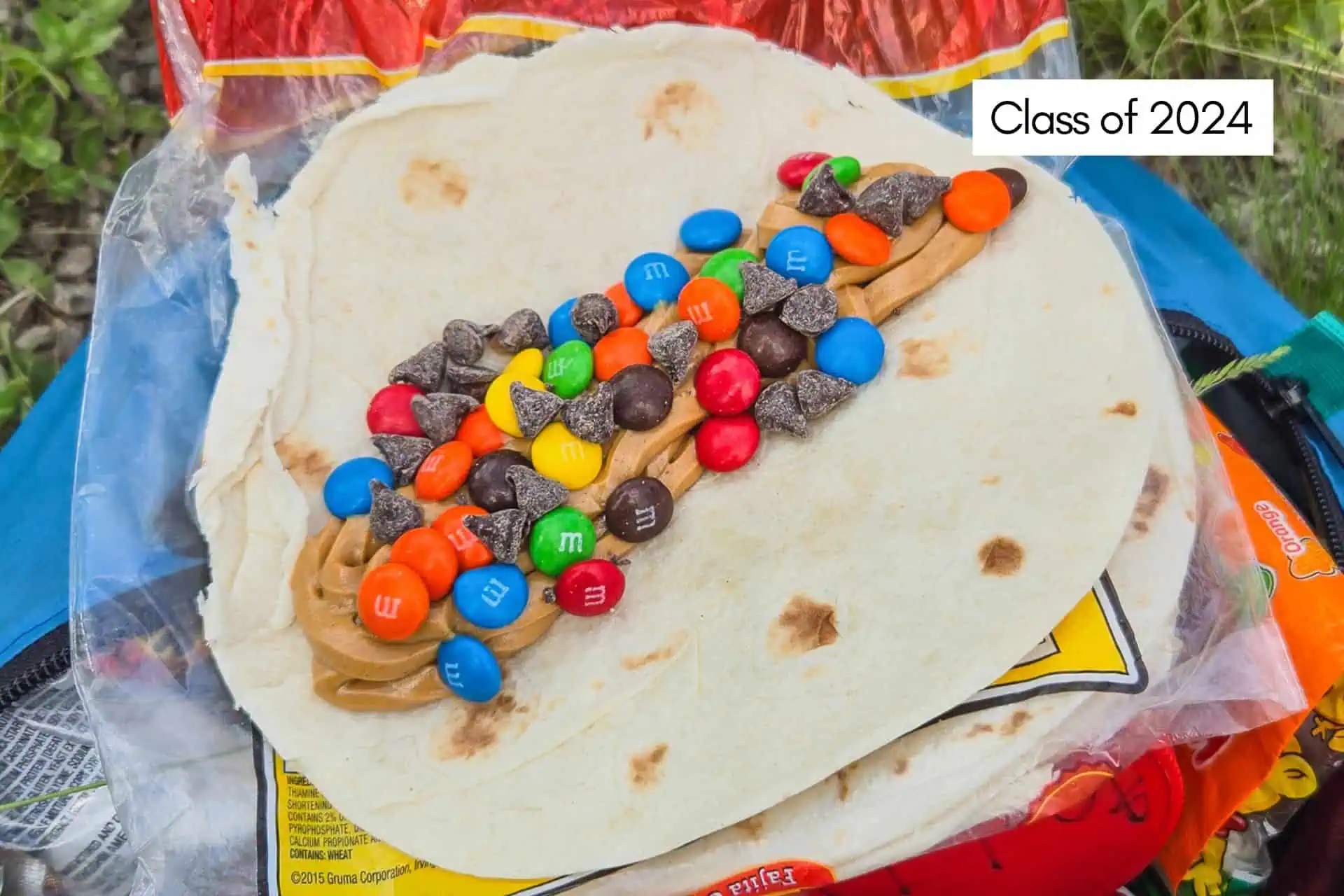
This was the Toughest most brutal trail i have completed but its now my favourite
I got roasted in the desert sandblasted getting out of it,
the water, what there was of it was undrinkable (most of the time )
Several close forest fire and more insane winds, Then you hit snow and blowdowns and blizzards
crossing huge tranches of snow slopes, and of course the scary as hell knife edge . Wading through snow melts and more blizzards followed by more blowdowns .. But the scenery is stunning , my fellow hikers amazing as I pushed through Wyoming cattle country became a torist a few times in Yellow stone as I watched old Faithful and then on into Montanna.. The state that I was dreading because of the Grizzlies But I just loved it, The bluff charges and getting too close to Grizzlies, being stalked by a mountain lion ,detouring around Moose and almost being killed by mountain goats bringing down rocks onto me .
I certainly embraced the Brutality and bloody loved it
Snailtrainer a 60 year old Brit
Sounds like fun!
I was nobo in 2016. I was near cumbres pass when I saw a sign that said ” welcome to colorful Colorado”. I thought that the trees looked just as green as the ones in New Mexico and didn’t quite understand the sign. 4 days later, a day short of Elwood pass, I removed my shoes and socks to camp for the night and all 10 of my toes were a very dark shade of purple. It was then I started to understand the sign
I hope all your toenails survived!
Wow! The human condition is still alive & well! These sound MISERABLE, yet everyone pushed on over & over. So glad to see some grit still in America! Wishing beyond hope, maybe one day. If I can do a year of grueling physical therapy….nah, again, who am I kidding. It is not just one thing with me, it is so many. It would be foolish for me to ever attempt one of these…takes all my willpower just to do 6 miles. (NOT gonna put rescuers in danger cause I am laid up!) God Bless all of you in your endeavors and thank you for sharing!
p.s. I kept working for three years in Baghdad with what I did not know was some serious injuries all up and down my spine. When the dropfoot got so bad I could not walk to the d-fac, that is when I decided to get looked at. An MRI in Kuwait city told me “You’re Done!” 10 years ago they wanted to replace both my knees, and fuse my lumbar AND cervical spine. Found out in a cat scan I now have emphysema and some previously un-diagnosed thoracic injuries. I push myself, but no where near to y’alls Herculean feats! Civilian Contractor, I purified water for the troops so they did not have to worry about biological, chemical, or nuclear attack through the water system. We are pretty much on our own when we come home. At least I have made myself walk, walk, walk, walk with my dogs. Thanks for reading if you have gotten this far. Hug the ones you love cause you are not guaranteed tomorrow. Lost my Mom & Dad last couple of years, all I want is a hug.
Hey CrazedChef, heres a big fat airhug for you!
{{{!!!AAAAAAAAIIIIRRR HHHHUUUUUUUUUUUUUG!!!}}}
My best advice is ALWAYS treat/filter the water. I filtered EVERY source and did not get sick. I also had the ability to skip some of the more disgusting sources since I can go a long ways on little water. Read the notes about sources ahead and maybe carry more so that you can avoid the worst.
Not filtering your water does not make you cool.
Agreed…it just makes you sick. I met a lady that thought she had lyme disease because of fatigue and joint pain. But she also confided that she hadn’t been filtering all the time, so I thought it much more likely that she had a water-borne illness. Lyme is not all that common in the west…but giardia is.
That was depressing. We post holed through the Sam Juans and my wife got swept away crossing a creek but managed to not drown. We eventually stopped at Cottonwood Pass. I would go back if I had others in their 70’s to go with. When a thru turns into a section the logistics become an expensive drag.
The trail can be a treacherous place – particularly the San Juans.
Any thoughts on why there is so much more sickness reported in the CDT suffering than the PCT suffering blogs? It sounds like a major trend from start to finish, but I don’t remember much mention of it on the PCT blog.
Water sources are a lot more questionable on the CDT and most hikers are more experienced which I think leads to less filtering (don’t know why this is a correlation, but I think it is).
I would say its down to water or the lack of it, and what there is of it you wouldnt let your dog drink it,
I filtered but still got sick just before Steamboat. a Vey expensive town to be poorly in !!